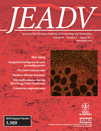Teledermatology with an integrated nurse – led clinic on the Faroe Islands – 7 years’ experience
Conflict of interest None declared (all authors).
Funding sources None.
Abstract
Background Telemedicine is an increasingly suggested answer to the problem of providing high-class medical service to rural and remote areas in a modern society. Dermatology is a promising candidate for telemedical service, because it is well suited for clinical questions forwarded together with photographs.
Objectives To describe the patient population of the Faroe Islands dermatology clinic with respect to distribution of diagnoses, treatment, duration, response time and patient flow.
Methods Case notes were drawn from all dermatology consultations managed during 2003–2009 through the national teledermatology system. These were compared with case notes drawn from the same journal system from the regular outpatient clinic.
Results Over the last 7 years, a total of 9161 consultations in 7.7% of the population have been performed. The demography of the patient population reflects the underlying population apart for an over-representation of the female gender in younger years. The disease spectrum is comparable with what has been reported in other outpatient clinics, except for the relative absence of skin cancer and pigmented lesions, for which regular outpatient consultation is reserved.
Limitations The study is descriptive.
Conclusions The experience derived suggests that teledermatology may serve as a near-adequate alternative to a regular private practice, if abstaining from treating minor common skin conditions and purely cosmetic conditions is acceptable.




